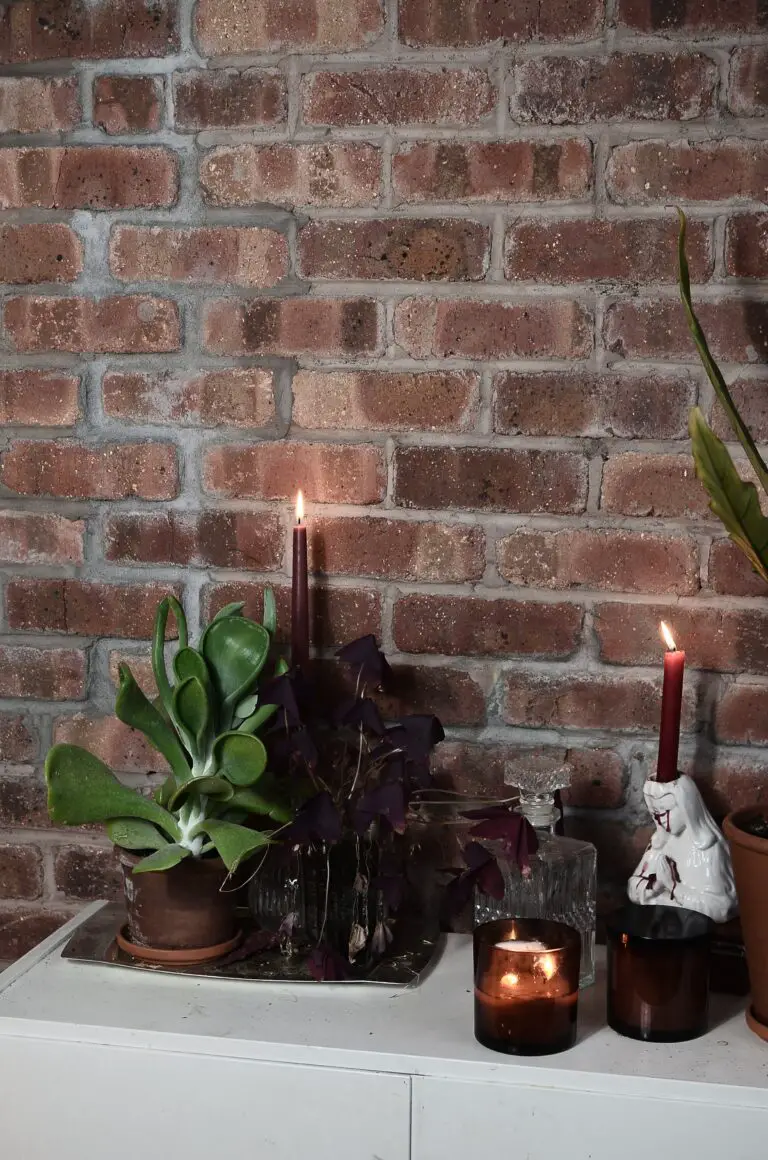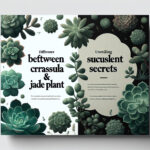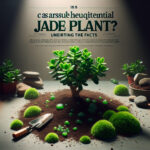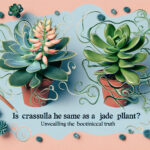Introduction to Crassula
Welcome to the fascinating world of Crassula! These aren’t your average potted companions; they’re sculptural beauties that weave tales of triumph in both arid plains and cozy living room corners. Often known as jade plants or money trees, Crassulas are revered in folklore for bringing financial luck and thriving with minimal fuss. But let’s peel back the layers of these succulent celebrities to truly understand their global allure.
Captured in home magazines and lauded by plant enthusiasts, Crassulas have become the epitome of botanical elegance. Picture this: a serene study room, sunlight softly filtering through the blinds, and there, on a mahogany desk, stands a Crassula, its jade-green leaves glistening—a silent guardian of peace and prosperity.

While you might be familiar with the famed Crassula ovata, these plants come in a dizzying array of shapes and sizes, from miniature rosettes to shrub-like giants. Each one is unique, with leaves that could either be delicately needle-thin or as plump as a raincloud ready to burst. Their adaptability is astonishing, thriving in the neglectful hands of a forgetful waterer or basking in the glory of a seasoned gardener’s curated sunbeam.
If you’ve ever pondered over the best choice for a low-maintenance yet visually stunning addition to your living space, consider exploring the diverse world of Crassulas. Aside from their striking appearance, they are celebrated for their resilience; a reassuring presence in a world that often moves too fast. Interested in incorporating these verdant friends into your own slice of paradise? Dive into the essentials of succulent garden treasures and how to keep them thriving season after season.
In this introduction, we’ve barely skimmed the surface of the Crassula genus. But stick around, and you might just find yourself enchanted by these green gems, contemplating if their beauty is matched by the possibility of being a tantalizing addition to your plate. Stay tuned as we unveil the myths and truths behind the edibility of Crassula plants.
Myth vs. Reality: The Edibility of Crassula
When walking through the aisles of a plant nursery, the Crassula, with its plump, vibrant leaves, often catches the eye. This succulent has crafted its own tale in the plant kingdom, where its allure extends beyond ornamental charm. However, rumors have swirled around these fleshy beauties, casting shadows of doubt on their edibility. Let’s chow down on some facts and untangle the truth from tasty tall tales.
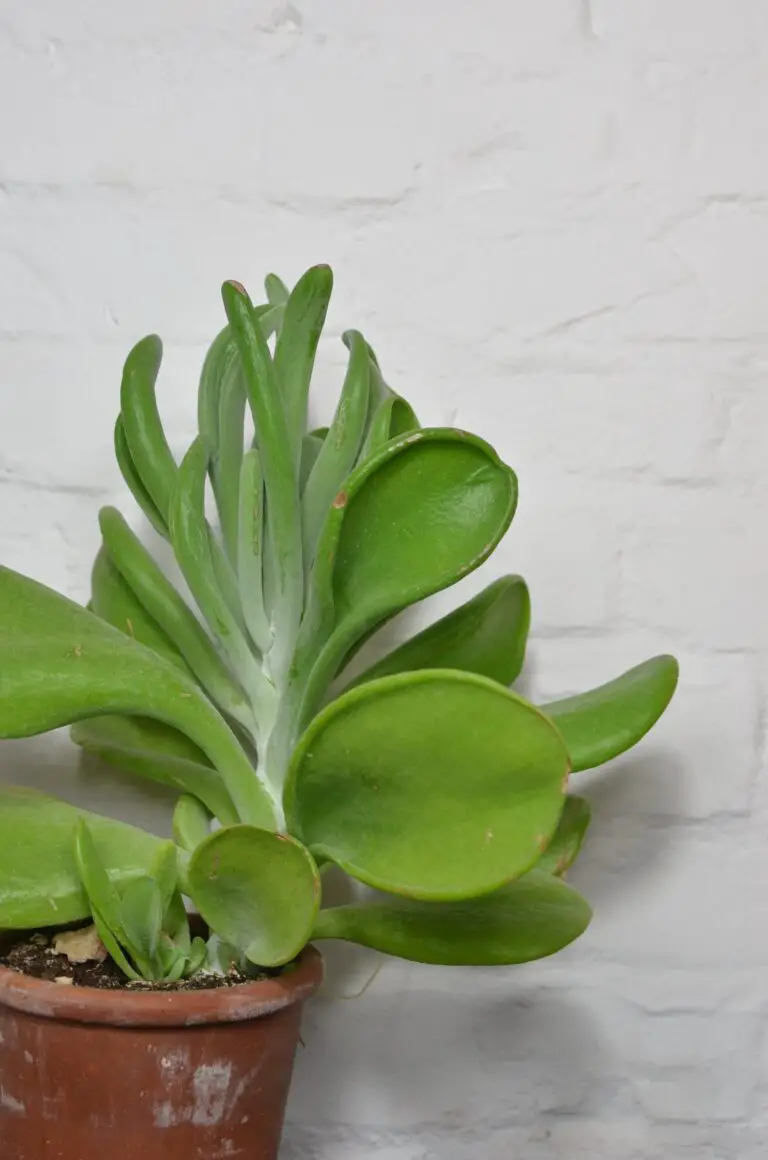
The whispers in the gardening corridors often speak of Crassula as a hidden gem in the culinary world. Enthusiasts with a penchant for adventurous eating might view their textured leaves as an exotic garnish. But before you consider plucking a leaf to sprinkle over your next dish, let’s dissect this culinary curiosity.
Scientific scrutiny tells a different story altogether. Succulents, by their nature, are survivors, hoarding water in arid conditions. It’s their superpower, but also a cloak of mystery that’s led to some interesting kitchen experiments.
For example, speculations have circled around certain succulent species that have found their way onto plates as leafy greens or zesty additions. Yet, Crassula species haven’t quite made it into the mix. Their survival strategy does not align with our dietary needs, and reports of their consumption are, at best, anecdotal. The romancing of their potential as a food source is a narrative spun from threads of hope and hunger.
The Culinary Verdict on Crassula
Imagine considering the nutritional profile of a plant that thrives with minimal water. It’s a stretch. The truth is that not all succulents are created equal when it comes to edibility. While the idea of a salad spruced up with Crassula might sound innovatively green, it’s a green light that’s yet to receive scientific backing.
So, can you eat Crassula? While the mythbusters of botany would love to say a resounding “yes”, the current consensus leans towards caution. For now, these jade-like jewels are best served as visual delights, rather than supplements to your greens. Let’s leave the Crassula to excel in aesthetics while we dine on less dubious delicacies.
Analyzing Crassula Toxicity
So you’ve got your eyes on the Crassula plant with its alluring, thick leaves, charming presence, and undeniable popularity as a houseplant. But hold on! Before you go nibbling on those jade-like leaves, let’s dig into what’s really going on beneath that succulent exterior. Could your Crassula be the forbidden fruit in your indoor garden?
We know that Crassula plants are a feast for the eyes, but are they a feast for the body? Scientific scrutiny reveals a not-so-tasty truth: there are potential toxic compounds at play. Ingesting these fleshy leaves might take you on a trip, and not the kind you’d enjoy. Vomiting, lethargy, and a bit of a mood kill could be on the menu if you decide to dine on these green beauties.
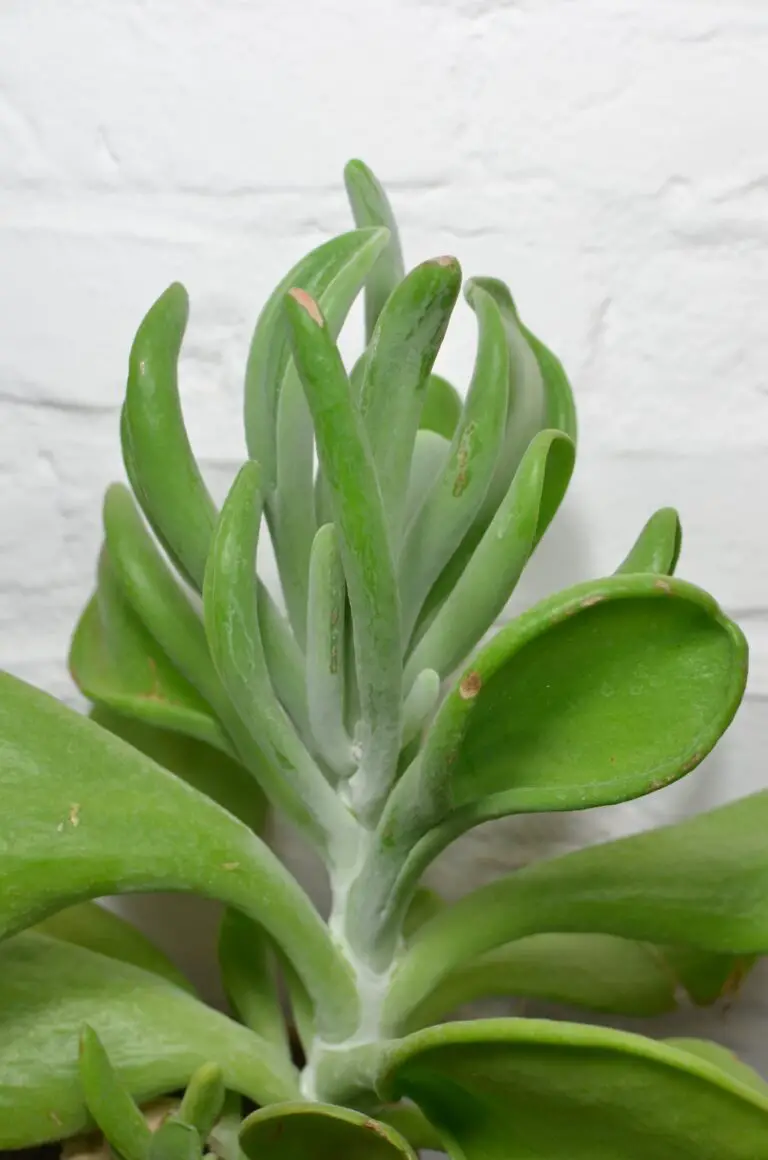
Picture this: you’re lounging in your living room, admiring your potted Crassula. It’s a serene sight, no doubt. But then, your curious cat slinks up to the pot, takes a nibble, and the next thing you know, you’re on a midnight dash to the vet. It’s a real concern for pet owners, as every plant parent should know how their green buddies might impact their furry friends.
Now, let’s not get overly dramatic. Casual contact with these stonecrop relatives isn’t going to warrant a call to poison control. But, as with many plants, caution is key. Understanding the risks can ensure that you and your leafy friend can coexist safely, without turning your snack time into a hazardous event.
Crassula Varieties and Their Edibility
Let’s pull back the curtain on whether we can be munching on the fleshy leaves of Crassula plants, the green darlings of the succulent world. With their myriad of shapes and sizes, Crassula varieties have become iconic in windowsills and gardens alike. But when it comes to plucking a leaf for a nibble, there’s more to consider than just their captivating appearance.
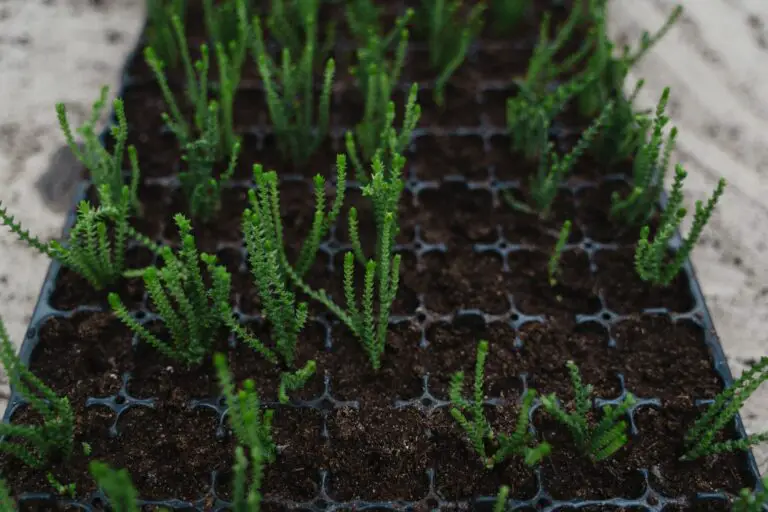
Take the Crassula ovata, commonly known as the Jade Plant. It’s practically a household name, and for a good reason. A symbol of prosperity and good fortune, but not so much in the culinary world — it’s deemed non-toxic to humans, yet, there’s no chorus singing about its edibility or inclusion in salads.
Then we have the Crassula arborescens, also hailed as the Silver Dollar Plant. It’s like a living sculpture with its silvery leaves, but before you consider it as a plate garnish, note that it’s listed as mildly toxic. Consuming it could lead to an upset stomach, so it’s best admired from afar rather than on your dinner plate.
Coming across case studies, we find cautionary tales rather than culinary endorsements. In one instance, a curious gardener sampled a leaf from a Crassula muscosa — known for its intricate, ladder-like leaves — only to encounter bitterness and a prompt swig of water to wash away the aftertaste.
Stories like these underline a common theme: while ‘edible’ might technically be in the realm of possibility, ‘palatable’ and ‘safe’ are entirely different banquets. Most varieties of Crassula, like the enchanting Crassula capitella, the Campfire Plant with its fiery red leaves, are better suited to visual feasts, not the edible kind.
Clearly, when it comes to Crassula plants, they’re a joy to the eyes but not necessarily a delight for the taste buds. There may not be a universal poison label across the genus, but when in doubt, it’s wise to err on the side of caution and keep these succulents as aesthetic companions rather than culinary experiments.
Safe Alternatives: Edible Succulents and Plants
If the question “can you eat crassula” has left you curious, it’s crucial to separate fact from fiction. While crassula plants are not on the menu, there are a variety of succulents out there that are not just safe to nibble on but can be quite delightful. We’re about to dig into the world of edible succulents that can add an exotic twist to your next meal. So put aside those crassula leaves, and let’s explore some appetizing options.
Take the Aloe Vera, for instance, a plant many of us know for its skin-soothing gel. But did you know that the flesh of Aloe Vera can be eaten and is often found in desserts and drinks? It’s like discovering a hidden edible treasure in your own backyard! Or consider the Dragon Fruit, the flamboyant showstopper of the cacti family. Its vibrant flesh adds a tropical flair to any fruit salad or smoothie.
Bringing Succulents to the Table: A Culinary Adventure
If your taste buds are adventurous, why not sample the Prickly Pear cactus? Widely consumed in Mexican cuisine, it’s a superb example of how traditional knowledge preserves the use of indigenous, edible plants. This succulent’s pads and fruit are commonly transformed into salads, soups, and even candies, proving that the desert’s bounty is as varied as it is surprising.
Another succulent star is the Salicornia, often referred to as sea beans or samphire. Thriving in salty marshes, it brings a crunchy, salty kick to summer meals. Often found in upscale seafood dishes, it pairs wonderfully with a fresh catch of the day, capturing the essence of oceanic flavors in its crisp, green stems.
For those of us eager to green our plates with more sustainable options, these edible succulents are not just intriguing curiosities, but also potential staples in an eco-conscious diet. By incorporating these unexpected edibles into our menus, we’re also partaking in a global tradition of exploring plant-based goodness. Who would have thought that the answer to “can you eat crassula” would open up such a verdant vista of culinary possibilities?
Preparation and Consumption of Edible Plants
Welcome to the green side of the culinary world, where the line between your garden decor and dinner plate can become delightfully blurred! As we venture into the topic of eating crassula and other similar succulents, let’s masticate on the meat of the matter: preparing and safely consuming edible greenery.
Identifying Your Greens
First and foremost, let’s talk identification. Not all that’s green is good to go down the gullet. Take crassula, for example—a common household succulent that may grace your windowsill. But is it on the menu? Spoiler: It’s best left as eye candy. Knowing your plants is critical, so if you wouldn’t make a salad with random leaves from the park, extend that caution to all plants. Partner with a knowledgeable botanist or refer to reliable plant identification guides to avoid turning a culinary adventure into an emergency run.
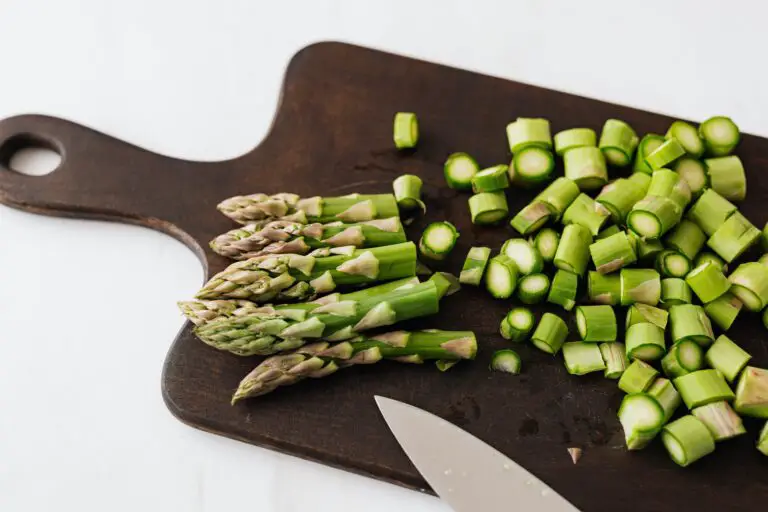
Safety First: Plant Prep Rules
Assuming you’ve got the green light for an edible plant, it’s not as simple as pluck and munch. Many edible plants require specific preparation to be palatable or, more importantly, safe. Did you know rhubarb stalks make a scrumptious pie but its leaves harbor oxalic acid, which is toxic? That’s why it’s paramount to understand the dos and don’ts—a task that can seem daunting but becomes second nature with a bit of study and practice.
The Nitty-Gritty of Plant Culinary Art
Now let’s dig into the culinary how-to. Proper preparation can range from simple washing to remove potential pesticides (organic or not, a good scrubbing is non-negotiable!) to more complex tasks like leaching, which is used for certain wild greens to remove bitterness. Some plants, such as certain types of beans, demand thorough cooking to eliminate naturally occurring toxins. A little heat can transform a no-go into a yes-please; just look at how we tame the wild nature of cashews, which are toxic in their raw state, into a snack bowl staple.
The lesson here? Never underestimate the power of preparation. And remember, even though your neighbor’s home-grown kale might be the talk of the town, always inquire about their gardening practices, as the handling of plants from soil to plate plays a pivotal role in their safety and your enjoyment.
In conclusion, while your crassula may not be the next superfood trend, there’s an awe-inspiring array of bona fide edible plants out there. With a sprinkle of knowledge, a dash of caution, and a generous helping of preparation, you can safely and satisfyingly expand your palate. Bon appétit!
The Role of Crassula in Home and Garden Decor
While the culinary world continues to debate over “can you eat crassula”, let’s shift our focus to a universally acclaimed virtue of these succulents—decorative appeal. Crassula plants, with their lush, jade-like leaves, have long been cherished for bringing a touch of verdant elegance to interior spaces. But their role in the aesthetic game is more strategic than merely sitting pretty on a windowsill.
A stroll through a well-appointed living room or a trendy office space often reveals Crassula varieties, seamlessly integrating into the decor. Their architectural structure adds a geometrical element to spaces, blending founder and rounder indoor landscapes. They are nature’s own little sculptures, with varieties ranging from the compact ‘Crassula ovata’ to the dainty ‘Crassula perforata’, each telling its own story of texture and form.
Consider the scene of a minimalist apartment where every furnishing is meant to evoke spaciousness and calm. Here, a strategically placed Crassula can become the focal point of the room. Its evergreen presence contrasts with the transient flashes of screens and the hustle outside the window, making it not only a visual treat but a silent announcer of a slower, steadier pace of life.
It’s not just about the aesthetics; these plucky plants punch above their weight in their environmental contributions too. Crassula not only please the eye but clean the air, removing toxins and exhaling fresh oxygen, making them natural allies in our homes. One can imagine the tranquility of a reading corner, enhanced by a Crassula’s refreshing presence, turning a mere chair and lamp into a sanctuary.

But the magic of Crassula doesn’t end indoors. In garden decor, these succulents are just as mighty. Needing little care, they thrive in rockeries and alpine gardens, creating a lush, yet rugged landscape that’s effortless to maintain. Nestled among stones or atop a garden wall, they capture the essence of nature’s resilience and its understated beauty.
Day by day, as we bring more of these resilient, charming plants into our lives, they become silent witnesses to our routines. Each morning as we sip our coffee, the sight of a Crassula basking in the soft sunlight is a reminder of life’s simple pleasures. And while the debate rages on about their edibility, there is no question about the feast for the eyes they provide in our private retreats and social spaces.
Advice from Experts: Horticulturists Weigh In
Have you ever found yourself marveling at the thick, glossy leaves of a Crassula and wondering if this decorative darling doubles as a snack? If the thought has crossed your mind, you’re not alone. But before you consider turning your succulent into a salad, let’s dig into some professional wisdom.
Horticulture experts, those green-thumbed guardians of garden lore, have quite a bit to say on the topic. At first blush, a lush Crassula plant might not scream ‘dinner,’ yet the question of its edibility isn’t so easily discarded. These specialists caution against the impulse to nibble on your houseplants, as the line between ornamental and edible isn’t always clear-cut.
Consider the Crassula ovata, commonly known as the Jade Plant. It’s a staple in homes for its supposed ability to attract wealth, but does it also attract the health-conscious eater? The consensus is pretty firm: ornamental Crassula varieties, beloved for their hardiness and sculptural aesthetics, are not candidates for your cuisine. Despite being non-toxic to humans, these succulents are not meant for consumption and provide little to no nutritional value.
Dabbling in the art of plant tasting is a venture best left to the experts, or at least to those well-versed in which greens are good to go. For example, while some Crassula species may have distant, edible relatives in the sprawling succulent family, the common household varieties should remain strictly ornamental.
Remember that story about your friend’s cousin who tried to make a smoothie out of a bouquet? Don’t let that be you. Before eating any plant, it’s crucial to ensure that you have accurate information about its safety and edibility. As for Crassula, adorn your windowsills and desks with their vibrant vitality, but keep your plates reserved for recognized edible greens.
Frequently Asked Questions
Embarking on the journey of Crassula consumption can be as twisted and intriguing as the succulent’s own fleshy leaves. Let’s untangle some of the common curiosities that sprout in the minds of many concerning the munch-worthy truths about these lush, jade-green beauties!
Q: Can you actually eat Crassula, or is it just garden-gossip?
It’s a question that’s been leafing around for quite some time. While some folks swear by adding a sprig of Crassula to their herbal teas, others might turn a shade paler at the thought. However, beyond hearsay, Crassula isn’t a garnish on the plates of culinary aficionados. There’s a reason you see them perched on windowsills rather than wilting in your salad bowl. To put it simply: it’s not typically on the menu.
Q: Are there any Crassula connoisseurs out there? Any anecdotal evidence?
We’re not chopping boards here, but the closest you’ll find to a Crassula connoisseur might be the overeager house cat that takes an experimental nibble. Anecdotes suggest that Crassula may have been nibbled on in times of dire need, but these tales are as sparse as a desert landscape. The rule of thumb: if Fluffy avoids it after a taste test, it’s probably not a paw-licking good idea for humans either.
Q: So, if it’s not edible, why the confusion?
The Crassula genus flaunts a vast array of species, each with its own quirky patterns and poise. Edibility often gets mixed up among the different types of succulents and herbs. But let’s be crystal clear – while they all can jazz up a room with a pop of green, not all greenery is meant to be chewed. Crassula has many talents, but tickling your taste buds isn’t one of them.
Q: Could Crassula be the next superfood, or should superfoods be… actual food?
It’s tough competition in the realm of superfoods, where every leaf and berry is vying for the spotlight. But when it comes to Crassula, it sits this one out. Superfoods pack a punch of nutrients and are cheerfully devoured, but our succulent friend is more of a silent supporter of indoor aesthetics than a dietary champion. Best leave the leafy gusto to the kale and spinach of the world!
